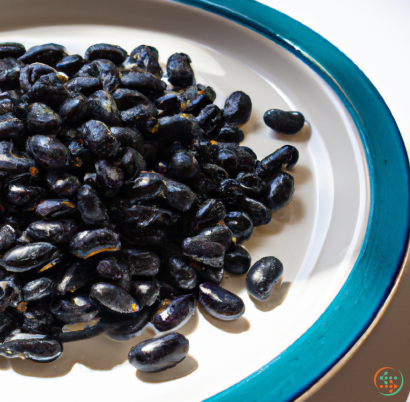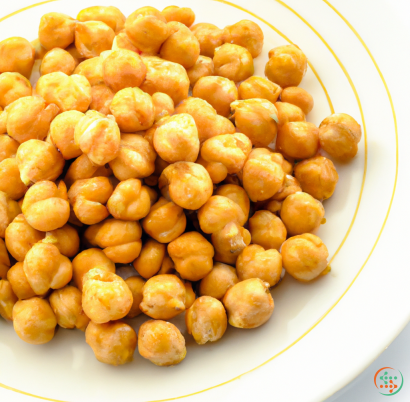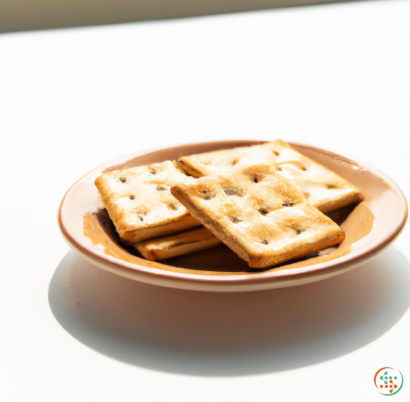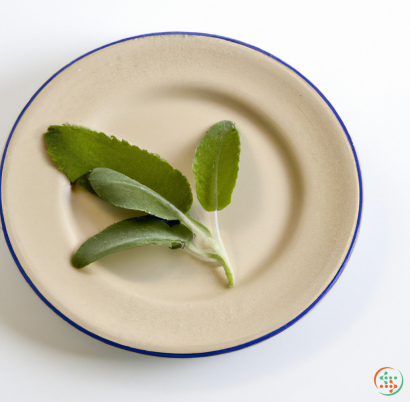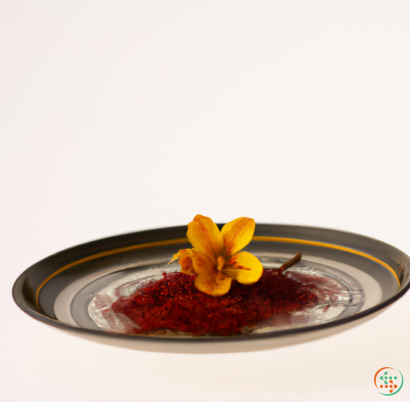Parsley
and how to use it
Parsley - The Flavorful Herb That Is Perfect for Every Dish
What is parsley? Parsley is an herb that has been used in cooking, medicine and ornamentation since ancient times. It belongs to the Apiaceae family, which includes such spices as celery, carrots, fennel, cumin and dill.
Parsley is a biennial herb that is often mistaken for a weed because of its wide, weedy growth habit. The leaves of the plant are thin, flat and strongly divided, with a few tiny hairs along their edges. Parsley leaves are typically green in color with a slightly peppery flavor.
When used in cooking, parsley is often added to dishes as a garnish or flavor enhancer. It can be used fresh, dried, frozen or ground into a powder known as “parsley flakes”. The leaves of this herb can be chopped, crushed or minced, depending on how they will be used in the dish.
Not only is it a delicious addition to any dish, but parsley also has some amazing health benefits associated with it. This herb is rich in vitamins A, C and K, as well as minerals such as magnesium, iron, calcium and potassium. Parsley is also an excellent source of dietary fiber and plant proteins. It is a great choice for those looking to improve their overall health and wellness.
One of the most common ways to use parsley is as a garnish. This herb can be used both raw, as is, or cooked in many dishes. When used raw, it adds a wonderful flavor boost and can give a dish a fresh and vibrant look. When cooked, the flavor of parsley intensifies, so it should be added early in the cooking process to allow time for its flavor to seep into the dish.
Parsley can also be used in sauces, stews, and soups. Again, parsley should be added at the beginning of the cooking process to allow its flavor to develop fully. It’s important to note that when cooked, parsley loses some of its flavor and should not be used in dishes that require long cooking times.
Parsley is also an excellent addition to salads, either as a garnish or as a main ingredient. Chopped parsley can be added to any salad for extra color, texture and flavor. It can also be used as a bedding herb for grilled meats or fish, adding a delightful green hue to the plate.
Simply adding a tablespoon of fresh chopped parsley to your dish can make a huge difference in its flavor. Parsley is able to enhance any flavor it accompanies and can even be used in desserts to add a burst of freshness. For example, adding a tablespoon of freshly chopped parsley to a chocolate mousse is a great way to add a unique flavor to your recipe.
There are many ways to use parsley to boost flavor in cooking, but it should be noted that its flavor is best when fresh. Dried and ground variations have less of an intense flavor and should only be used when you’re unable to use fresh parsley.
No matter how you use it, parsley is a flavorful herb that can add life to any dish. Its versatility and health benefits make it a great choice for any home cook looking to add a bit of flavor to their meals. Whether it's as a garnish or as the main ingredient, it's safe to say that parsley is a must-have in any kitchen.
Parsley, the fragrant herb used to spruce up dishes ranging from tabbouleh to beef stew, is a staple in many home kitchens. Its flavor adds a subtle complexity to dishes, and its vibrant green color adds a pop of life to platters of food. Parsley, however, does not appear on dinner tables as if by magic. There are many steps and processes, both human and outside forces, involved in getting this nutritious herb from seed to plate that are complex, interesting, and often overlooked. This blog post will explore exactly how this process takes place and what goes into bringing it to your dinner plate.
The story of parsley begins with a seed, usually held within a hard, protective coating called the seed coat. The exact color of the seed varies depending on the commercial variety and where it was sourced, but generally, it will be somewhere on the continuum of light tan to dark gray. These seeds are particularly hardy and can survive in a variety of climates. In the early stage, they will require some degree of warmth, moisture, and darkness to germinate and begin to sprout.
Once the seed has found the right conditions to germinate, its journey to becoming a fully-grown plant begins. Under the right environmental conditions, the cotyledon-covered seeds split open and a single seedling emerges, one with two cotyledons that store nutrients. As the seedling grows, these cotyledons will provide the new leaves with sustenance until it is mature enough to begin photosynthesizing and producing its own food.
The seedling continues its development over the next two to three weeks as it matures and grows without reaching its full stature for at least another five weeks. In terms of physical features, the plant’s leaves can be either flat or curly depending on the variety, and the stem can be a bit hairy depending on the type. Additionally, parsley’s flowers look like small white umbels and blossom in the spring and summer months.
As the plant continues to age and mature in its environment, it will require certain elements from both nature and human assistance. For example, when planting commercial parsley, farmers will often amend the soil with fertilizer to make sure that their crop has the necessary nutrients it needs for growing. Fertilizers like bone meal, rotted manure, and compost are commonly utilized for this purpose. For instance, a nitrogen-rich fertilizer can help promote growth in young plants, while a bloom booster can encourage the flowers of a mature plant to produce more resin.
Parsley’s environment also plays a role in how it will grow. Areas with long daylight hours, moderate rainfall overall and with consistent temperatures throughout the day will create an optimal environment for the growth of parsley. If the herb is grown in very hot areas, it will often turn yellow quickly and will become bitter in taste.
Once the plant has been harvested and the herb is ready to be used, it can be harvested in various ways. For restaurant chefs, individual leaves can be plucked free and served as a garnish. For home cooks, they can parse the herb itself, either finely chopping it with a knife or pulsing it in a food processor. Alternatively, some companies sell freeze-dried parsley that can be used right away.
Once parsley has been harvested and is ready to be used, it is usually stored for the most part in an airtight container in the refrigerator, where it can retain its natural green hue and flavours for up to two weeks. Alternatively, when using fresh parsley, it should be incorporated into dishes as close to the time it is harvested as possible to ensure maximum freshness.
Regardless of the manner in which it is harvested, parsley has a long history as an accompaniment to dishes and as a flavour enhancer for meals. Its nutrients include vitamin K, C, A, and B6 and it is full of essential minerals like iron and zinc, making it a healthy addition to dishes. Whether it is the subtle flavoring of the leaves, the flavor of the crushed seeds, or the delicate aroma of the leaves, parsley adds a unique, vibrant energy to foods that cannot be replicated.
In conclusion, parsley’s productive and nutritional journey from seed to plate is anything but short. It requires a specific combination of elements and time in order to come to fruition and bring a dish to life. Its flavor, texture and nutrition are all factors in why it is so popular on dinner tables around the world, and, as such, it is important for us to give the herb the respect it deserves. Whether it is fresh, frozen or dried, parsley always provides the freshest flavor and best nutrition for our dishes – no matter how complex the journey from seed to plate.
| Vitamin A | 0.421 mg | |
| Beta-Carotene | 0.005054 grams | |
| Vitamin E | 0.75 mg | |
| Vitamin K | 0.00164 grams | |
| Vitamin C | 0.133 grams | |
| Vitamin B1 | 0.09 mg | |
| Vitamin B2 | 0.1 mg | |
| Vitamin B3 | 0.00131 grams | |
| Vitamin B4 | 0.0128 grams | |
| Vitamin B5 | 0.4 mg | |
| Vitamin B6 | 0.09 mg | |
| Vitamin B9 | 0.152 mg |
| Calcium | 0.138 grams |
Daily Value 1.3 g
|
| Iron | 0.0062 grams |
Daily Value 0.018 g
|
| Magnesium | 0.05 grams |
Daily Value 0.4 g
|
| Phosphorus | 0.058 grams |
Daily Value 1.25 g
|
| Potassium | 0.554 grams |
Daily Value 4.7 g
|
| Sodium | 0.056 grams |
Daily Value 2.3 g
|
| Zinc | 0.00107 grams |
Daily Value 0.011 g
|
| Copper | 0.15 mg |
Daily Value 0.9 mg
|
| Manganese | 0.16 mg |
Daily Value 0.0023 g
|
| Selenium | 0.1 ug |
Daily Value 0.055 mg
|
| Tryptophan | 0.045 grams | |
| Threonine | 0.122 grams | |
| Isoleucine | 0.118 grams | |
| Leucine | 0.204 grams | |
| Lysine | 0.181 grams | |
| Methionine | 0.042 grams | |
| Cystine | 0.014 grams | |
| Phenylalanine | 0.145 grams | |
| Tyrosine | 0.082 grams | |
| Valine | 0.172 grams | |
| Arginine | 0.122 grams | |
| Histidine | 0.061 grams | |
| Alanine | 0.195 grams | |
| Aspartic Acid | 0.294 grams | |
| Glutamic Acid | 0.249 grams | |
| Glycine | 0.145 grams | |
| Proline | 0.213 grams | |
| Serine | 0.136 grams |
| Total Sugars | 0.9 grams |
per 100g
|
| Myristic acid (14:0) | 0.01 grams |
|
| Palmitic acid (16:0) | 0.08 grams |
|
| Stearic acid (18:0) | 0.04 grams |
|
| Total Saturated fatty acids: | 0.13 g | |
| Oleic acid (18:1) | 0.29 grams |
|
| Palmitoleic acid (16:1) | 0.01 grams |
|
| Total Monounsaturated fatty acids: | 0.3 g | |
| Linolenic acid (18:3) | 0.01 grams |
|
| Linoleic acid (18:2) | 0.12 grams |
|
| Total Polyunsaturated fatty acids: | 0.13 g | |
| Phytosterols | 0.01 grams |
|
| Total Sterols: | 0.01 g | |

